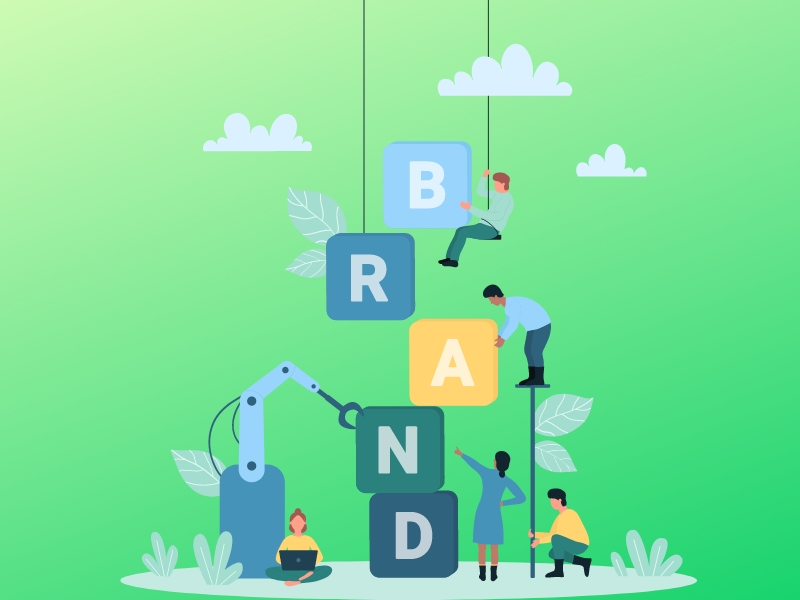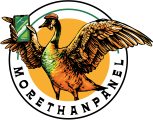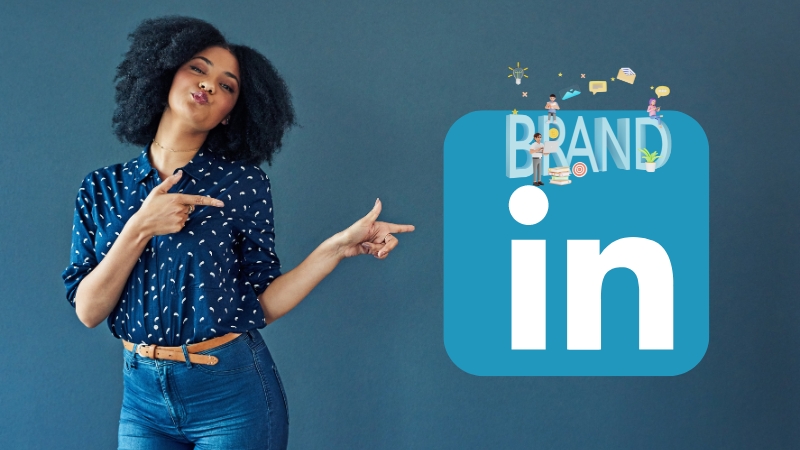Have you ever felt as if your personal brand was on mute while others hit high notes? Imagine achieving that sweet spot when others not only see you but also understand you. It's the difference between whispering in a hurricane and hearing your voice echo across valleys.
A generic LinkedIn profile means you'll miss out on opportunities to connect with competent professionals, boost your career, or become a thought leader in your sector. Despite your best efforts, people will pass by your LinkedIn profile or content.
So, how can you convert your LinkedIn profile into a personal brand? We’ll explain how to build a personal brand on LinkedIn in 2025. Read on to find out more.
What Is a Personal Brand?
Personal branding can be defined in many ways as the building of an audience, becoming a thought leader, becoming a professional creator, and doing employee advocacy.
Be it what you may, branded identity entails transferring your information on the outside to the public to create a familiarity with your expertise in your chosen area of specialization.
One can accomplish this by using their social media accounts, subscribing to the newsletter, giving speeches and shows as a guest, and so on. Many professionals developing will use various channels to broaden their reach and achieve their personal branding objectives.
Why Build a LinkedIn Personal Brand?
You need to build a personal brand on LinkedIn or elsewhere to level up in your career — it certainly helps.
Here are some of the advantages of personal branding:
- Develop credibility as a thought leader in your business.
- Stand out from the crowd in terms of fresh work opportunities.
- Drive traffic to your own or your company's website.
- Get new customers or clients without performing outreach.
- Brand collaborations, a paid newsletter, a subscription service, and other strategies can help you monetize your following.
Personal branding helps you establish a professional reputation. Connecting with others who share your interests boosts your online visibility, increasing your chances of getting discovered by potential employers and business partners.
And there's a real psychological rationale behind this. People do business with brands they can trust. By openly demonstrating your competence, you reassure people that they can rely on your abilities and judgment.
A personal brand boosts your chances of being discovered by professionals and enterprises who require expert advice or services.
Is LinkedIn the Right Platform for Personal Branding?
Today, LinkedIn is not only the site where you can post your CV and look for new vacancies every day. Originally, the platform was designed to search for jobs, but today it is much more than that—it is a platform for studying, connecting, and even improving one’s skills.
LinkedIn is the natural choice for those working in more business surroundings, particularly in the B2B market, just as people in lifestyle industries use Pinterest or Instagram to share material.
Think about the ultimate purpose of personal branding: LinkedIn is probably the greatest platform for you if you want to grow your B2B clientele or make a lasting impression as a prospect.
Developing your personal brand on LinkedIn is the best method to take control of your image if you want to.
How To Build Your LinkedIn Personal Brand In 2025

The following are the best LinkedIn personal branding guidelines to assist you project yourself as a leading authority in the field:
Define Your Personal Brand
Identifying your distinctive qualities and what you want to be recognized for is the first step towards developing a personal brand on LinkedIn. This will assist you in developing an engaging profile, producing pertinent material, and making the proper connections.
You must respond to the following queries to define your personal brand:
- What are your main competencies and advantages?
- What are your passions and values?
- What dreams and ambitions do you have?
- What distinguishing qualities and unique selling points do you offer?
- What are the issues you can resolve and what benefits can you provide?
You must create a one- or two-sentence personal brand statement after you have a firm understanding of your personal brand. This succinct statement ought to encapsulate your core values, intentions, and pledges. It ought to be clear, genuine, and unforgettable.
Your LinkedIn profile and content will be built upon your personal brand statement. It will support you in articulating your value offer and drawing in your target market.
Optimize Your LinkedIn Profile
The second process in the development of a personal brand is choosing what to emphasize on your LinkedIn profile and how you want to be seen. What you have online is your business card, portfolio, and résumé all wrapped into one. It is the first thing that any potential business partners, clients, employers, and contacts will be introduced to about you.
To optimize your LinkedIn profile, you need to:
- Select a nice, polished photo that reflects your face well and aligns with your personal brand.
- Create a compelling title that highlights your value offer, role, and primary keyword. As an illustration, mine is: As a proficient writer and content strategist, I can assist you in producing captivating and memorable content.
- Write a captivating synopsis that summarizes your background, emphasizes your abilities and accomplishments, and displays your personality. To make it seem more intimate and approachable, use the first-person perspective and a conversational tone. Include a call to action encouraging the reader to get in touch with you or visit your work.
- Complete the other areas of your profile, including those about your accomplishments, education, experience, endorsements, and recommendations. Make use of numbers, bullet points, and keywords to emphasize your accomplishments and worth. Include media files to display your work samples and portfolio, such as pictures, videos, or papers.
- Customize your profile URL to make it more professional and memorable.
Create And Share Relevant Content
The third phase in developing your LinkedIn personal brand is to produce and distribute insightful material that highlights your experience, benefits your audience, and encourages interaction. LinkedIn's currency is content. It's how you create opportunities, expand your network, and establish your reputation.
To create and share content on LinkedIn, you need to:
- Determine your target audience's requirements, difficulties, passions, and objectives. Utilize resources like LinkedIn groups, surveys, and analytics to get opinions and insights from your audience.
- Choose the right content format for your audience, style, and topic on LinkedIn. Posts are suitable for short, in-depth content, articles for in-depth, stories for informal, videos for emotive, live broadcasts for engaging, and newsletters for active following.
- Plan and schedule your content using a content calendar. A content calendar aids in organizing and planning content, coordinating goals, deadlines, keywords, formats, themes, timing, frequency, and content mix balance, thereby enhancing content delivery.
- Write and edit your content with best practices and tools. Writing and editing are crucial skills for developing high-quality LinkedIn content. You must write in a clear, concise, and engaging style that will attract your audience's attention and interest. You should also check your text for grammar, spelling, punctuation, and readability.
- Use images to make your material more engaging and effective. Visuals have been proven to boost engagement, retention, and conversion rates. They also assist you in conveying your message and making a lasting impact.
Engage With Your Network and Community
The fourth and last step in creating a personal brand on LinkedIn is to interact with your network and community. Engagement is the key to establishing trust, credibility, and influence on LinkedIn. It is how you express your individuality, voice your thoughts, and form significant connections.
To engage with your network and community on LinkedIn, you need to:
- Comment on other people's content related to your area, industry, or interests. Share your ideas, views, questions, and feedback. Be respectful, productive, and real. Avoid spam, self-promotion, and trolling. Aim to add value and initiate a conversation.
- Respond to comments about your own material. Thank your audience for their participation, answer their questions, address their concerns, or solicit their feedback. Be courteous, helpful, and friendly. Express your admiration and gratitude.
- Send targeted connection requests to people who share your goals, niche, or industry. Explain why you want to engage with them, what value you can provide, and how you can help them. Avoid sending generic or automated communications. Be specific, real, and respectful.
- Follow up with your connections and develop partnerships. Send a welcoming note, identify yourself, and thank them for connecting. Share any related articles, resources, or opportunities with them. Request feedback, guidance, or referrals. Offer to assist, support, or collaborate. Be dependable, attentive, and generous.
Conclusion
In 2025, you can expand your network and accomplish your career objectives by using these actions to create a personal brand on LinkedIn. Recall that developing your personal brand is an ongoing process rather than an event. Maintaining and improving your personal brand on LinkedIn requires constant creation, updating, and engagement.
MoreThanPanel is the most affordable SMM panel and social media services provider panel, where people can buy social media marketing services such as Facebook likes, Twitter followers, YouTube views, Instagram followers, YouTube watch time views, TikTok followers, Snapchat followers, website traffic, Snapchat likes, TikTok likes, and many other SMM panel services.
With MoreThanPanel’s SMM Panel, you can grow your social media accounts quickly and effectively and increase your visibility and engagement on these platforms. If that sounds good, Get started for free!



